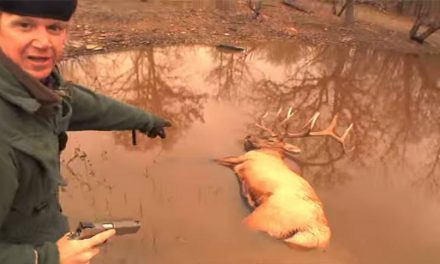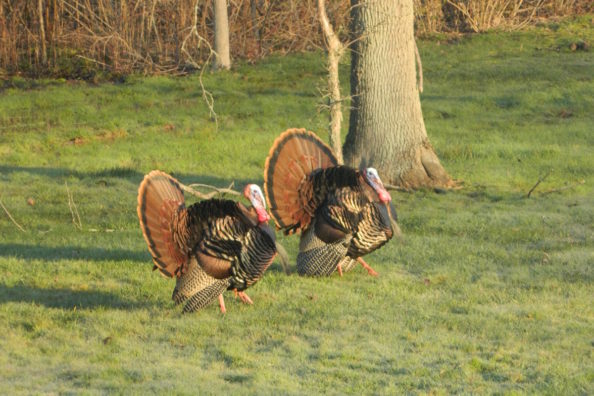
The Turkey Grand Slam awaits for those who know the species involved and where to find them.
If you’re a turkey hunter then you’ve obviously heard about the turkey Grand Slam at some point. It then stands to reason that you’ve considered trying to make a plan, travel, and then try to outsmart every bird on this list to say that you’ve accomplished this feat.
But there’s a lot to know before considering yourself a wizard of the wild turkey.
Wild turkey hunting is already a passion of sportsmen and women across America. There are many reasons for this, not the least of which is the fact that they are so wary and elusive. Sometimes they seem to exist only to thwart us and taunt us while they make their escape, but successfully stalking and hunting the wild turkey is the stuff of dreams for most every bird hunter out there.
And what would be considered the ultimate successful turkey hunt, wherever we may live? It’s the one quest that every turkey hunter dreams of: the Grand Slam.
The Grand Slam of turkey hunting involves accomplishing an accumulative series of subspecies harvests in the contiguous United States. It’s usually measured over the course of a lifetime, but the ambitious set out to accomplish it in a season or a full year’s time. There are four subspecies needed to reach the goal. The first main use of “Turkey Slam” as a term was coined by the National Wild Turkey Federation (NWTF).
Let’s take a closer look at these birds, how they live and where they exist, and we’ll hope to find out a little more about what makes them tick.
Eastern Turkey
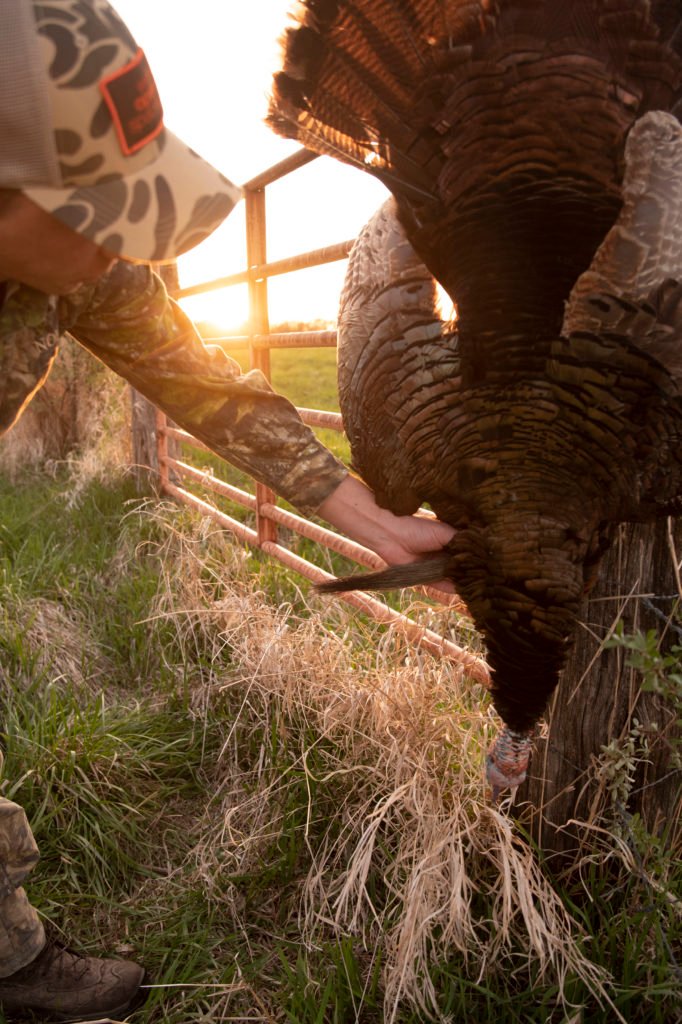
After years of chasing and studying them, most turkey hunters can quote the details and characteristics of the Eastern wild turkey, and have learned a lot about their habitat, breeding cycle, and behavior.
The Eastern turkey prefers a mix of forested areas and open grasslands to help provide them with the necessary cover and food requirements to feed themselves and their young, and to keep them protected from predators.
These birds will ultimately use farm fields to browse for waste grains, even coming into backyard settings to find what they can under bird feeders, but the bottom line is that they are constantly on the move to find invertebrates such as grasshoppers, beetles, spiders, and other insects that they can forage the forest floor from. They are also opportunistic feeders in that they will eat acorns and other tree nuts as they can find them while also gobbling up a salamander or two as the browse the leaf litter.
Eastern turkeys are roosting birds that need the safety of tall trees at night to keep them off of the ground and out of the reach of night predators like the coyote and the bobcat.
More generally, Easterns are known as the outrageous breeding birds that, in the spring of the year from about April to May, display puffed out feathers and tail fans in an effort to win a harem of hens to mate with They can be seen fighting with other Toms for the right, and sometimes that translates into aggression towards humans, or anything that may seem a threat. In areas where developed land and human encroachment mixes with Eastern turkey habitat, the encounters can range from hilarious to downright scary.
Since they are the most widely distributed of the turkey subspecies east of the Mississippi River, they are also the most abundant. They can be found in some 38 states. Generally speaking, most states with populations of Eastern wild turkeys have a spring season that runs anywhere from the beginning of April through the month of May, but be sure to check closely on the regulations in the state where you plan to hunt. Many of these states also allow hunters to bag one turkey in the fall as well.
Osceola Turkey
Turkey News: Giving thanks for Florida’s one-of-a-kind Osceola wild turkey #turkeyhunting
Posted by OutDoors Unlimited Media on Thursday, November 16, 2017
Osceola turkeys are native to central and southern Florida. Mostly found south of Orlando, these wild turkeys might seemingly be the toughest of all to take in the Grand Slam since they live in only one place in the nation. But the fact is that once you’ve hired an outfitter and gained access to private lands, the Osceola is one of the most call-friendly gobblers that you can hunt.
They eat mostly plant material, but the Osceola also forage for acorns, blackberries, and even amphibians to round out their diet. The Osceola wild turkey is smaller and darker than the bronze-colored Eastern subspecies with a green and red hue to their feathers.
Since we are generally talking about the southern part of Florida, their breeding season can run much earlier, from about January to May in the Sunshine State. Depending on the area desired, the turkey hunting season runs from about the beginning of March through the month of April, but be sure to check your local regulations for specific dates.
Merriam’s Turkey
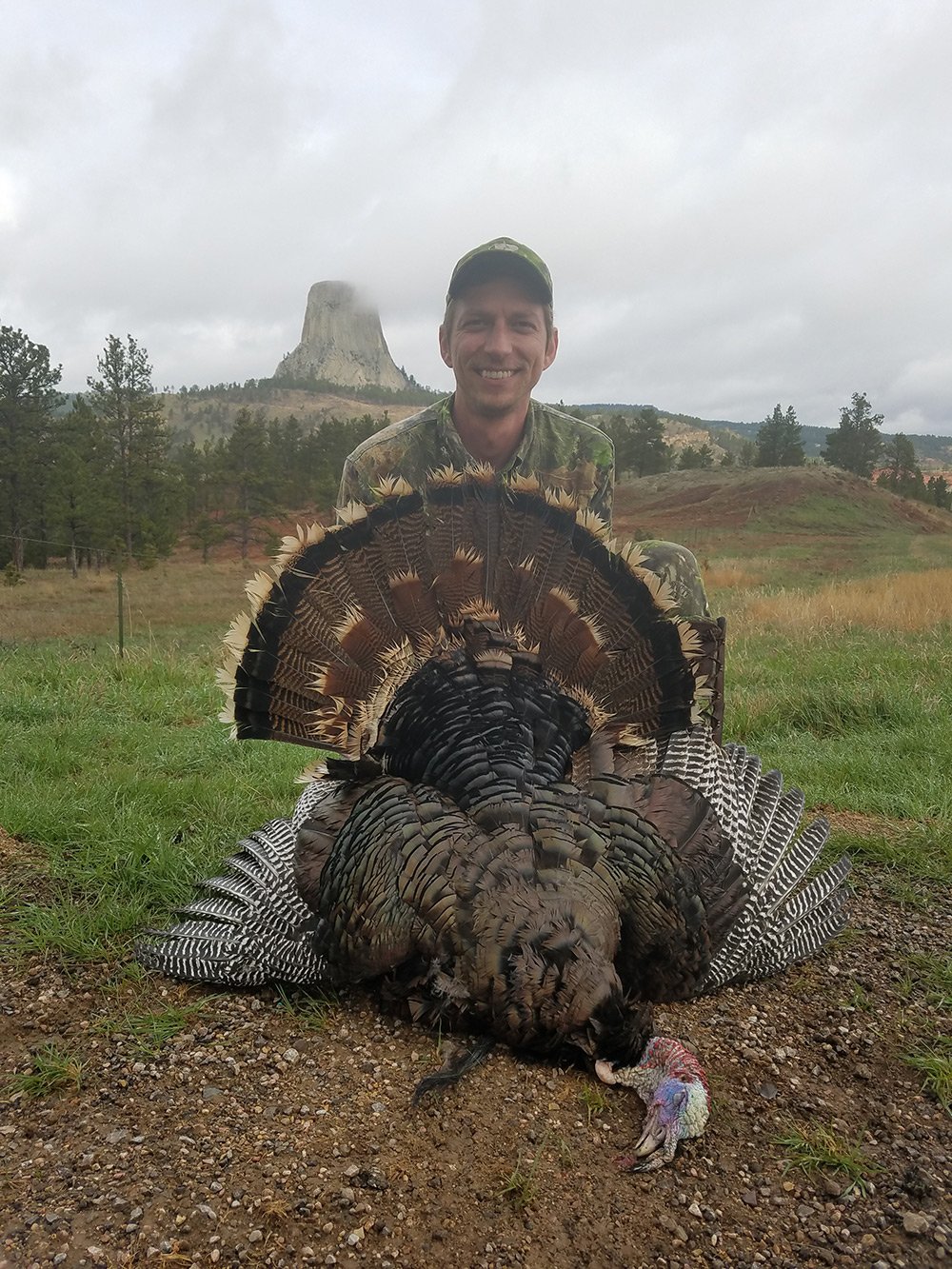
It is said that these are the birds to pursue after the other three have kicked your butt. It’s for you’re in need of a turkey hunt that will make you feel good about your hunting skills again. The one thing to know about the Merriam’s turkey is that they can overlap the areas that also hold the Rio Grande subspecies, making it possible to harvest both in the same area while attempting the Grand Slam.
Spring turkey hunting seasons in states with Merriam’s turkey populations generally run from mid-April to late May, but some state regulations start as early as late March (such as Nebraska). Fall season hunts vary from state to state, but hunters looking to bag another bird in the autumn usually get the chance starting sometime in October.
Although approximately the same size as the Eastern, the Merriam’s has is more black coloration with blue, purple, and bronze mixed in. Merriam’s turkeys are typically found in the Ponderosa pine forests of Colorado, New Mexico, and northern Arizona. They have been transplanted into many other western states including Utah, Idaho, Washington, Oregon, California, Montana, Wyoming, Nebraska, and South Dakota.
Rio Grande Turkey
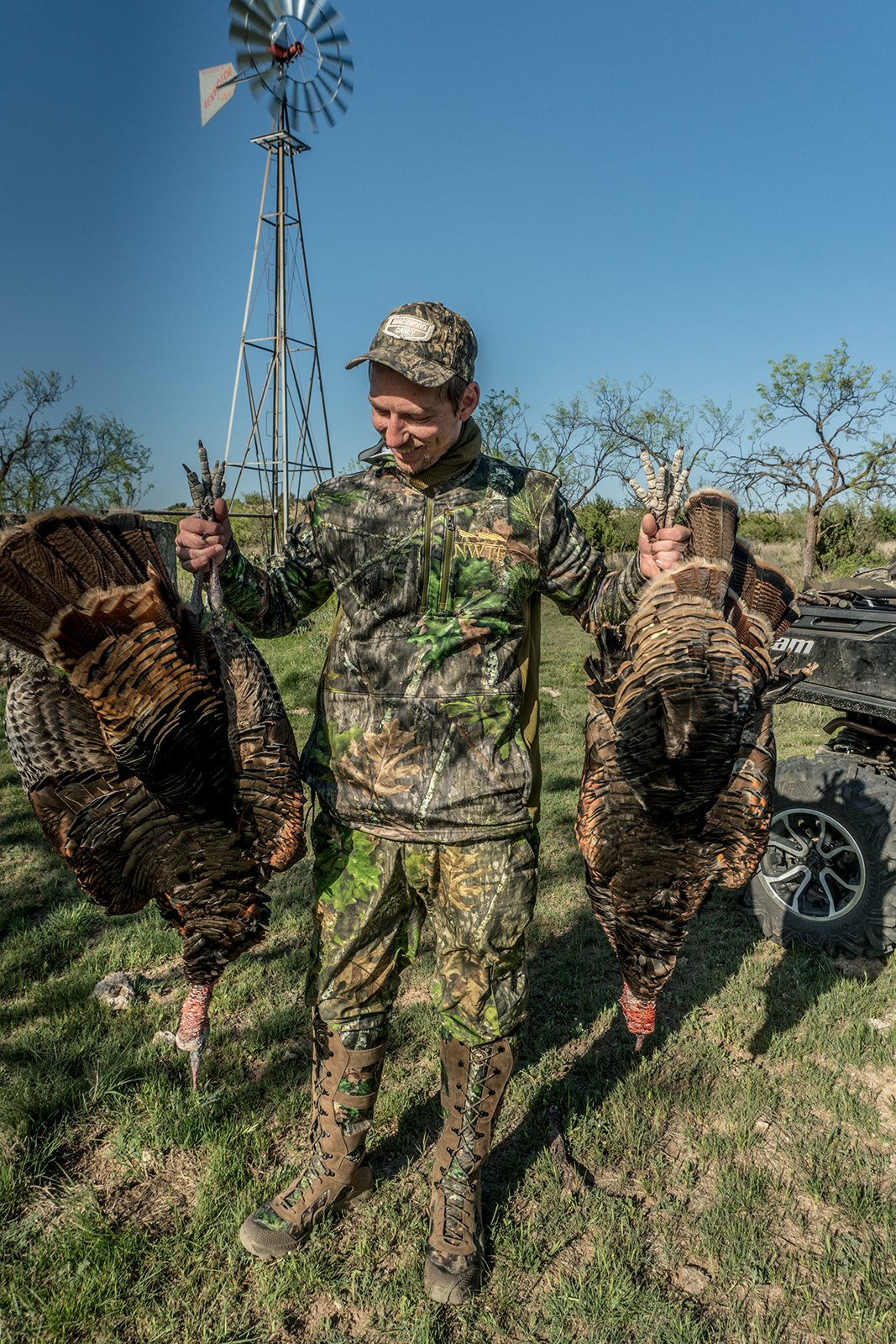
As you may have figured, the Rio Grande subspecies is found in Texas, but it is also found in Oklahoma, Kansas, and a smattering of other western states. It is sometimes mistaken for the Merriam’s and vice versa due to overlapping populations, but the Rio Grande Tom is known for its unique gobble that can’t be mistaken for anything else.
The Rio Grande wild turkey has the highest population and the widest distribution of the select turkey subspecies that live in the Lone Star State, making it the one to target there.
They seem to have all of the color attributes of the other subspecies and more: iridescent copper, bronze, red, green, and gold just to name a few of the variations. Their diet is basically the same with only a few variations due to the region, and they begin to mate in the early part of the spring and continue into the summer months.
Depending on the county in Texas, the spring season can run anywhere from late March or early April through the end of May. Similar regulations exist own Oklahoma and Kansas, but generally don’t start until April. Be sure to check your local game laws to be sure of the hunt that you are planning in these areas.
Other Turkey Slams
There are a number of other variations of a turkey slam, which mostly add and subtract the subspecies to come up with a separate list of harvests required. Some of these include the Grand Slam, the Royal Slam, the World Slam, the Mexican Slam, the Canadian Slam, and the U.S. Super Slam.
- Grand Slam (Eastern, Rio Grande, Florida and Merriam’s)
- Royal Slam (Eastern, Rio Grande, Florida, Merriam’s and Gould’s)
- World Slam (Eastern, Rio Grande, Florida, Merriam’s, Gould’s and Ocellated)
- Mexican Slam (Rio Grande, Gould’s and Ocellated harvested in Mexico)
- Canadian Slam (Eastern and Merriam’s harvested in Ontario, Quebec, Manitoba, Alberta or British Columbia)
- U.S. Super Slam (harvesting a wild turkey in each U.S. state expect Alaska)
These turkey hunting slams are not meant to be a competition. Attempting one will involve a lot of planning, money, and travel, but as many veteran turkey hunters across the nation that have accomplished this feat will tell you, it’s worth it. With few exceptions, the great thing about it is that you can almost always use the same calls and decoys that you would use in your home state for turkey hunting since the differences between the species isn’t all that great, but we’ll leave that decision to you and your outfitter.
Since we as turkey hunters love the pursuit of a wild, gobbling longbeard it doesn’t really matter to us where in the country (or in the world) we find ourselves setting up in the early morning near the roost. Only that we hear them see them, and ultimately get a shot at one that has been fooled by the call and is running straight in to our setup.
Looking for a little more or even hot lunch for your hunting blind? Follow my webpage, or on Facebook and YouTube.
NEXT: TURKEY HUNTER’S BOTCHED DECOY SHOT DOESN’T COST HIM A BIRD
The post Turkey Grand Slam: All the Species Needed to Accomplish the Goal appeared first on Wide Open Spaces.














